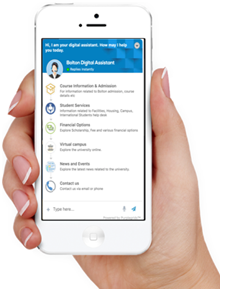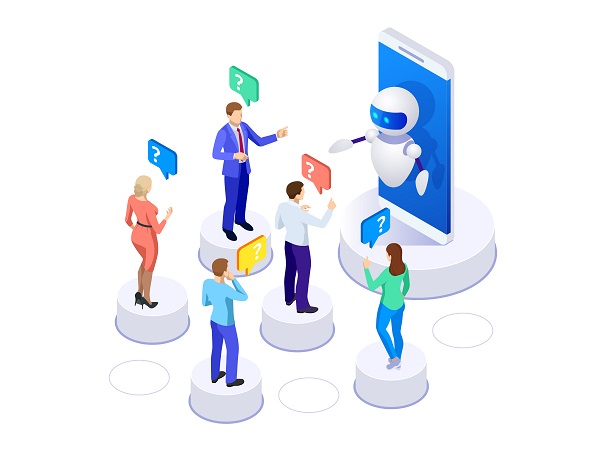Typically how do we get information on a product or company?
- We go onto a Search Engine and find the Company, product, or service
- In the mobile app world, we do a similar search for the info in the app
- Or we look up the “Contact us” information about the company and then call or send an email.
All this can be time-consuming or even stressful sometimes! Like being kept waiting on the line for 20 minutes. Or having to repeat a conversation you had yesterday with another agent! Or the difficulty to find the info on a revamped website/app!
Customer attitudes today: Give me the info I am looking for in the next 3 minutes or I am going elsewhere!
Enter Conversational Commerce
The next wave of Customer Engagement will thus be using Conversational AI. We have introduced the concept of Chatbots in Chatbots are a quantum leap in customer experience.

Customer Engagement platforms now extend the notion of using bots and micro-bots from just answering canned questions to product selection, purchases, payments, setting up appointments, customer analytics, sales and marketing. Bots are placed in different landing pages on the website to capture visitor information for targeted marketing and hyper-personalized offers. AI-driven Customer insights helped by scoring and segmentation are used to find high-value leads among millions of visitors to a website. These leads can be routed to sales representatives and managers, given special previews online or private previews in-store. All this while the middle and lower-rung customers are provided standard online product selection and purchase.
|
Most of the products in the market today offer Webchat facilities and messaging channels like Facebook Messenger, Telegram, Slack, SMS and email. Some offer Whatsapp access. So a visitor can use his preferred messaging channel for a conversation, although the User Experience (UX) may somewhat be dissimilar for different channels due to a channel’s visual limitations!
Product offerings provide the option to connect to almost any messaging channel. Voice assistants too.
Verticals that are targeted include Healthcare, Retail, Education, Auto Sales and Service, and Real Estate. Customer Engagement covers almost any customer-facing function, be it in Sales, Marketing, Customer Service or Operations. It can connect to existing backend systems like CRM and ERP.
Customer Engagement covers almost any customer-facing function
In the case of Healthcare, Patient Engagement will involve taking care of non-clinical needs of out-patient or in-patient departments. They connect to Hospital Information Systems. They can connect to simple Symptom checkers or advanced Medical Triaging systems. Voice Assistants can be used for ease of communication instead of texting.
Similarly, Student Engagement in Education is built along similar lines for course bookings, semestrial options, fees, tuition waivers and grants, boarding and lodging facilities.
The initial chatbots were very rudimentary and off-putting
The initial offerings that came up two years ago were quite rudimentary in their Natural Language processing skills. Users were sworn off by such chatbots because of their poor quality language comprehension skills. They were rigidly menu-driven and suitable for internal staffs like HRs, Admins and Finance functions, where quality mattered less!
| In comparison, today’s Customer or Employee engagement platforms are more sophisticated in their Natural Language Understanding (NLU) and contextual capabilities. They have in-built business vertical or domain knowledge bases and process-specific skills competency. These pre-built modules help to rapidly scale up the rollout in various verticals by speeding up the business-machine learning time frame.
|
Domain-specific knowledge bases and skills competency speeds up adoption in targeted sectors
The Future: Better Comprehension of Customer Intent

Conversational AI is here to stay! The NLU capabilities are getting more sophisticated. It is beginning to distinguish subtle differences in language, for example, the ability to understand sarcasm. Or understand multi-intent sentences at one go.
AI tracks the contact and geographical details of visitors having conversations and saves the messaging history! Even if the visitors haven’t given their details explicitly, returning visitors can be traced across different channels like Messenger & Whatsapp.
Those customers engaging extensively in product and pricing searches are segmented out as having a higher proclivity to purchase. And thus offered better discounts or private privileges!
In a couple of years, sophisticated Conversational AI-based Customer Engagement solutions would be pretty common across major industries, handling 80-90% of customer conversations.












